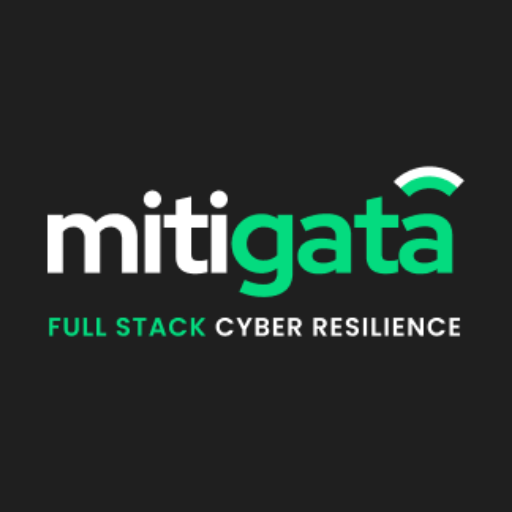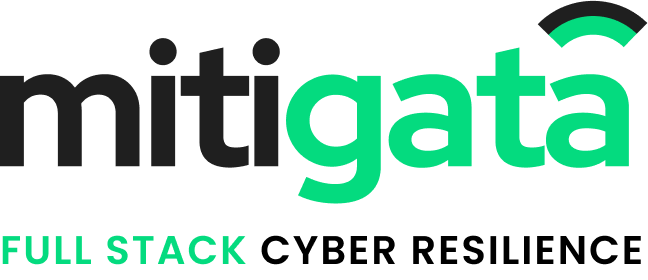Struggling to meet the SEBI Cybersecurity and Cyber Resilience Framework (CSCRF) deadline? You’re not alone.
If you’re managing a SEBI-regulated company right now, you know the pressure. You’ve got daily operations to run. But you also need to tackle compliance requirements that keep stacking up. Gap analysis, governance policies, SOC setup, VAPT, SBOM obligations – each one demanding your attention.
Here’s what makes this harder: your internal IT and compliance teams are already stretched thin. They’re juggling regular work, and many don’t have the specialised expertise CSCRF demands.
The truth is that a single overlooked step, such as a delayed VAPT or an incomplete SOC setup, can fail your certification.
So how will you make sure nothing is missed?
This blog will guide you through the entire CSCRF compliance process step by step. By the end, you will have a clear roadmap to meet SEBI’s requirements with confidence while also strengthening your company’s overall cyber resilience.
How Mitigata Helps You Achieve SEBI CSCRF Compliance Faster

Getting SEBI CSCRF compliance is not just about ticking boxes. It requires expertise, time, and the right execution. That’s where Mitigata makes the difference.
We are India’s leading cyber resilience company, trusted by 800+ businesses. Unlike others who only consult and leave the heavy lifting to you, we handle the entire process end-to-end.
From gap analysis to policy creation, from VAPT testing to security controls implementation, everything is done by our in-house experts, so there is no need to depend on multiple third parties.
The Smartest Way to Get SEBI CSCRF Certified Fast
Achieve SEBI CSCRF certification at 30% reduced cost using our enterprise-grade tools and in-house cybersecurity teams.

Here’s why companies choose us over others:
- Full lifecycle delivery: You deal with one partner accountable for planning, execution, audits and certification, which reduces handoffs and speeds up results.
- Faster path to certification: With our parallel workflows and in-house experienced teams, you meet SEBI deadlines faster as compared with others.
- Cost-effectiveness: Using our enterprise-grade security tools, we assist you in obtaining a SEBI CSCRF compliance certificate at a 30% reduced cost compared to other vendors.
- Deep technical breadth: We have 500+ cybersecurity products, plus in-house VAPT and SOC teams, eliminating the need for third-party involvement.
- Proven Expertise: Our track record of serving 800+ B2B businesses across 25+ industries speaks for itself.
Are you counted among those 60% of GRC users who manage compliance manually? It’s high time to check these popular automated GRC tools in India
What is SEBI CSCRF?
To improve the digital security of users of financial markets, the Securities and Exchange Board of India (SEBI) announced the Cybersecurity and Cyber Resilience Framework (CSCRF).
The implementation of this framework ensures that organisations handling confidential financial information have robust procedures in place to prevent cyberattacks, restore services when they occur, and continue with uninterrupted business activities.
In basic terms, SEBI CSCRF defines a priority for how managing companies should treat their cybersecurity posture.
The CSCRF considers governance and risk management through technical controls, testing, and ongoing monitoring.
The objective is to protect investors and maintain trust in the financial system while reducing the risks associated with new cyberattacks.
India is a hub of startups, but most of them struggle with basic information security. Check out these most trusted
ISO 27001 Compliance tools used by businesses!
Who Must Comply With SEBI’s Cyber Security Framework?
SEBI CSCRF compliance is mandatory for a wide range of market infrastructure institutions and intermediaries. Here’s who must comply and why:
Stock exchanges (NSE, BSE): These are popular targets for cybercriminals looking to influence trading or disrupt markets since they handle thousands of transactions every day.
Depositories (NSDL, CDSL): These organisations look after investor securities holdings and have to guard against unauthorised access that can result in data breaches or fraudulent transfers.
Clearing Corporations: In charge of trade settlement, these businesses manage substantial financial flows and are required to stop any interruption that might spread across the financial system.
Registered Intermediaries: Including stockbrokers, mutual funds, portfolio managers, investment advisors, and depository participants who directly interact with investor data and transactions.
KYC Registration Agencies (KRAs): These are custodians of sensitive personal and financial information for millions of investors, making them prime targets for identity theft and fraud.
Credit Rating Agencies: Their judgments have an impact on investment decisions. Therefore, data integrity and system availability are essential for market functioning.
The Fast Lane to SEBI CSCRF Certification Starts Here
800+ B2B clients trust us for faster and more reliable SEBI CSCRF compliance across industries.

Step-by-Step Guide to Achieving SEBI CSCRF Compliance
Thousands of companies apply for CSCRF compliance every month, but the majority of them fail because they don’t follow the required framework. Here’s a clear roadmap to follow:
- Understand the SEBI CSCRF Framework
To begin, you need to carefully read the SEBI CSCRF circular and annexures. You can obtain the official documents from the SEBI website, and they will orient you on how the framework operates together, using five domains – governance, network security, application security, data protection, and incident management.
- Evaluate Your Current Security Posture/Gap Assessment
Evaluate your present cybersecurity infrastructure against SEBI CSCRF criteria. This gap evaluation should reveal areas where your present controls fall short of the required criteria. Document all current security rules, technical controls, processes, and tools.
- Define Scope
Determine the extent of your compliance effort based on organisational criteria. Consider how many of your employees handle sensitive data, the total number of devices (computers, servers, mobile devices) connected to your network, the number of clients you serve, and the geographic distribution of those operations.
- Understand Your Category
SEBI assigns businesses multiple levels (usually Category I and Category II) depending on operational scale, transaction volume, and systemic importance. Larger stock exchanges and depositories are normally classified as Category I, with more strict standards, whilst smaller intermediaries may be designated as Category 2.
Every day, around 3.4 billion phishing emails are sent. Learn about these types of phishing emailsand stay ahead of such scams.
- Policy Development
Create cybersecurity policies that incorporate SEBI CSCRF requirements. Policies should include an Information Security Policy, Acceptable Use Policy, Incident Response Policy, Business Continuity and Disaster Recovery Policy, Access Control Policy, and Data Protection Policy. All policies must be reviewed and updated at least annually.
- Align with SEBI-Mandated Controls & Implement Critical Cybersecurity Controls
In accordance with the framework outlined in the regulatory directive, you should create a plan to implement administrative and technical controls.
Such controls include implementing multi-factor authentication, developing network segmentation, establishing secure configurations for your systems, implementing next-generation firewalls and intrusion prevention systems.
End-to-End SEBI CSCRF Compliance Managed by Experts
From planning to certification, Mitigata’s all-in-one solution ensures speed, savings, and seamless execution.

7. Conduct Regular VAPT & Audits
Vulnerability Assessment and Penetration Testing (VAPT) is a vital compliance requirement. Conduct device VAPT on all servers, workstations and network devices to identify vulnerabilities on the system level.
Conduct web application VAPT for all customer-facing and internal web applications to identify coding defects, injection flaws and authentication vulnerabilities.
8. Improve Threat Detection Capabilities
Execute a Security Information and Event Management (SIEM) solution to aggregate and analyse security logs across your infrastructure. Implement threat intelligence feeds so you may always remain ahead of emerging threats specific to the financial vertical.
Build or seek a Security Operations Centre (SOC), or partner with a managed security service provider to achieve around-the-clock monitoring and response capabilities for threat detection.
- Create an Incident Response and Recovery Plan
Create a comprehensive incident response plan that outlines the manner in which your organisation will identify and recover from cyber incidents. Establish an incident response team and create incident reporting procedures for SEBI and other stakeholders. Develop comprehensive backup plans and regularly test data recovery.
- Create Awareness Through Training
Human error is one of the leading causes of security breaches. Hence, you shouldn’t compromise on cybersecurity awareness training for all employees on topics such as recognising potential phishing attempts, practising good password hygiene, social engineering tactics, and safe browsing habits.
Specific training for IT employees is also essential, as it will teach them topics such as secure coding, system hardening, and incident response procedures.
Check out our expertly curated cyber insurance cost guide and find out which factors affect its premium.
- Examine the Risks Related to Third Parties
Determine the cybersecurity posture of every third-party vendor, service provider, and business partner who has access to your systems or data.
You should also implement a vendor risk management program that includes questionnaires for specific security responsibilities, frequency of audits and continuous monitoring of third-party threats.
Ensure third-party vendors are meeting relevant security standards as agreed and notify you of any security incident.
- Continually Monitor, Review, and Enhance
Compliance with SEBI CSCRF is not a one-time project but an ongoing process. Develop some key performance indicators (KPIs) and other metrics to make sure your security program is effective.
Continually review security controls and update risk assessments on a quarterly basis as your business continues to evolve.
Achieve SEBI CSCRF Compliance 30% Cheaper, 2x Faster
With in-house SOC and VAPT teams, Mitigata reduces dependency, delays, and costs without compromising quality.

Conclusion
Achieving SEBI CSCRF compliance can feel like navigating a maze, but with Mitigata, it becomes an easy journey.
With our in-house SOC team, expert VAPT services, access to 500+ cybersecurity solutions, and proven experience with 800+ businesses, we make sure you don’t just meet SEBI’s requirements – you achieve them faster, smarter, and at the best value.
Get in touch with us today and take the first step toward stress-free SEBI CSCRF compliance!

